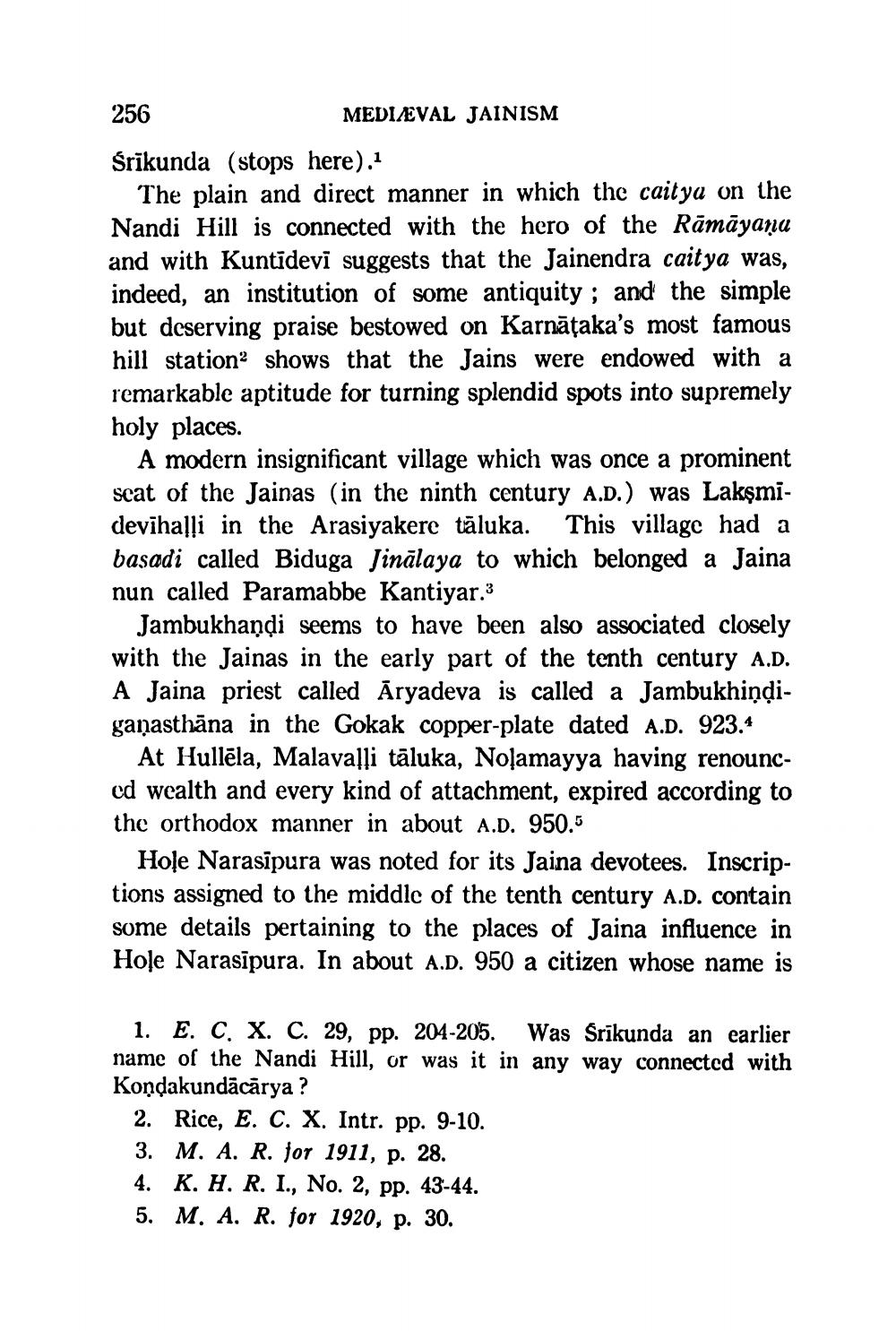________________
256
MEDIÆVAL JAINISM Śrīkunda (stops here).
The plain and direct manner in which the caitya on the Nandi Hill is connected with the hero of the Rāmāyaṇa and with Kuntidevi suggests that the Jainendra caitya was, indeed, an institution of some antiquity; and the simple but deserving praise bestowed on Karnāțaka's most famous hill station” shows that the Jains were endowed with a remarkable aptitude for turning splendid spots into supremely holy places.
A modern insignificant village which was once a prominent seat of the Jainas (in the ninth century A.D.) was Lakşmidevihalļi in the Arasiyakere tāluka. This village had a basadi called Biduga Jinālaya to which belonged a Jaina nun called Paramabbe Kantiyar.3
Jambukhandi seems to have been also associated closely with the Jainas in the early part of the tenth century A.D. A Jaina priest called Aryadeva is called a Jambukhindiganasthāna in the Gokak copper-plate dated A.D. 923.4
At Hullēla, Malavaļļi tāluka, Noļamayya having renounccd wealth and every kind of attachment, expired according to the orthodox manner in about A.D. 950.5
Hoļe Narasīpura was noted for its Jaina devotees. Inscriptions assigned to the middle of the tenth century A.D. contain some details pertaining to the places of Jaina influence in Hole Narasīpura. In about A.D. 950 a citizen whose name is
1. E. C. X. C. 29, pp. 204-205. Was Srikunda an earlier name of the Nandi Hill, or was it in any way connected with Kondakundācārya ?
2. Rice, E. C. X. Intr. pp. 9-10. 3. M. A. R. for 1911, p. 28. 4. K. H. R. I., No. 2, pp. 43-44. 5. M. A. R. for 1920, p. 30.




